During the lockdown of 2020/2021
I decided to create a
RETRO ROOM
VINTAGE HARDWARE
With all the issues of lockdown, not being able to do the normal things and with 24 hours a day doom and gloom and everyone thinking they know what’s right for us all, I decided not to watch the news anymore and create somewhere that took me back to happier times where life was less complicated, people looked out for one another and we all felt alot safer.
My RETRO ROOM project consisted of computers and systems that reminded me of my youth and systems that I have previously owned and ones that had a significant impact on my life growing up.
Apart from nostalgia, they marked important milestones in my life and bring me alot of happy memories as well as reminding me of lost skills and how diverse my knowledge and skill base was as we have grown into an Apple vs everyone else world.
from 1980 – 1985
Commodore VIC-20
The Commodore VIC-20 is an 8-bit home computer that was sold by Commodore Business Machines.
The VIC-20 was announced in 1980, roughly three years after Commodore’s first personal computer, the PET.
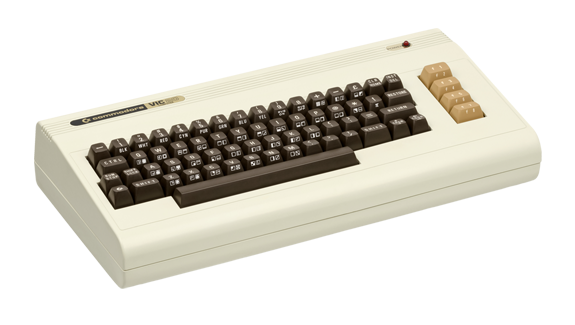
from 1984 – 1985
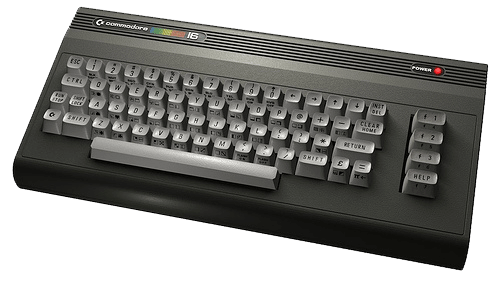
Commodore 16
The Commodore 16 is a home computer made by Commodore International with a 6502-compatible 7501 or 8501 CPU, released in 1984.
The C16 belong to the same family as the higher-end Plus/4 and are internally very similar to it (albeit with less RAM – 16 rather than 64 KB – and lacking the Plus/4’s user port and Three plus one software).
from 1982 – 1994
Commodore 64
This original Commodore 64 known as the breadbin model is an 8-bit home computer introduced in January 1982 by Commodore International.
The Commodore 64 had three different Kernal ROM versions, two different SID sound chip versions, a few different motherboard versions and two different cases during its lifetime.
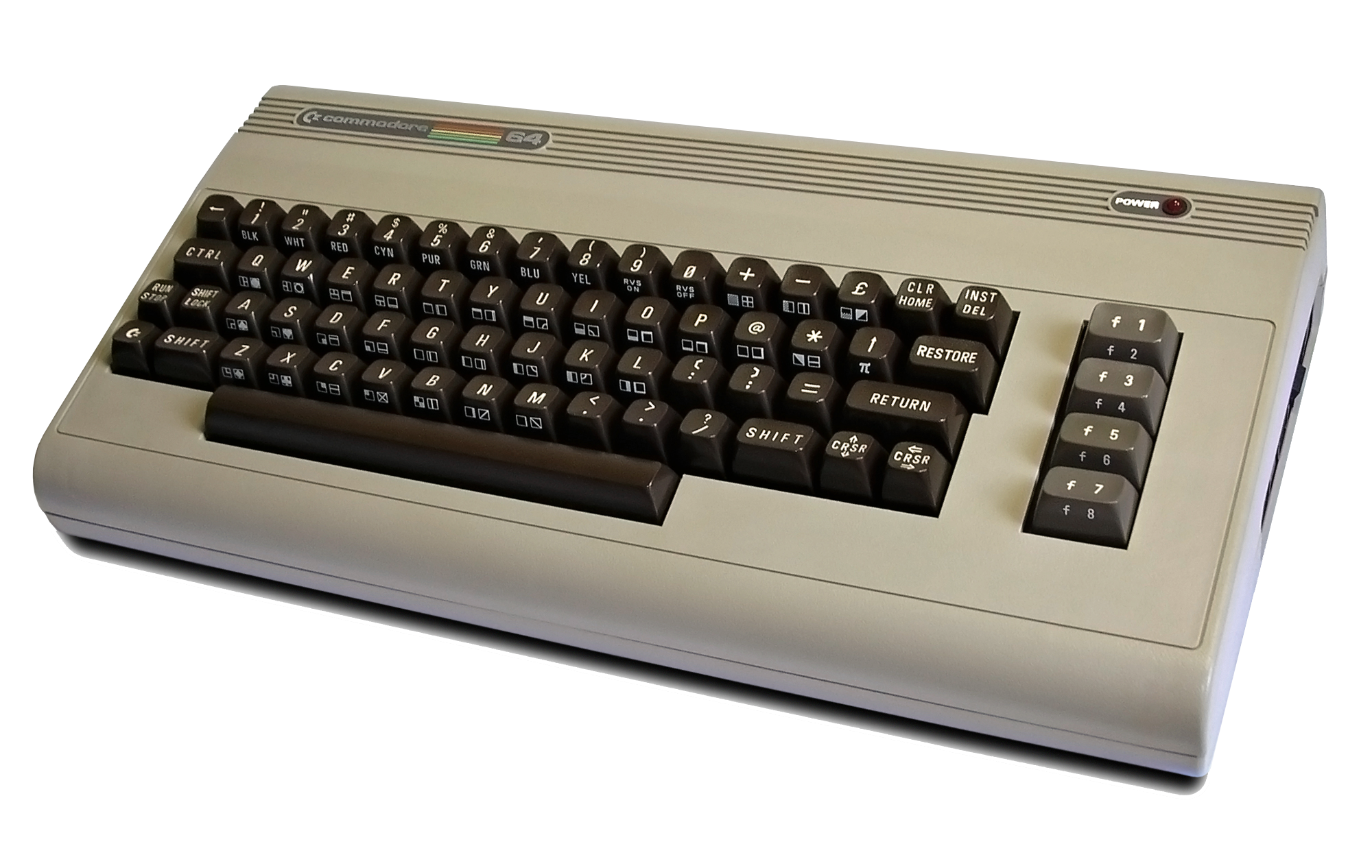
from 1987 – 1991
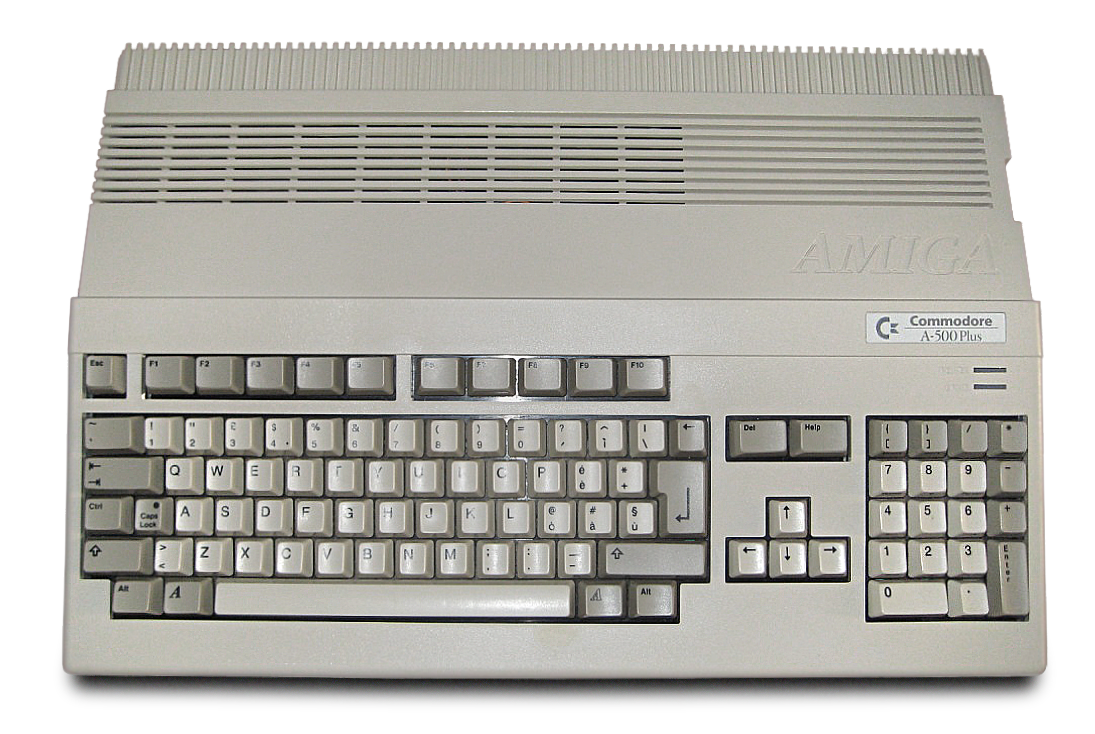
Amiga 500 Plus
The Commodore Amiga 500 Plus is an enhanced version of the original Amiga 500 computer.
It was notable for introducing new versions of Kickstart and Workbench, and or some minor improvements in the custom chips, known as the Enhanced chip Set (or ECS).
from 1987 – 1991
Amiga 2000
The Amiga 2000 is a personal computer released by Commodore in March 1987.
Expansion capabilities include two 3.5″ drive bays (one of which is used by the included floppy drive) and one 5.25″ bay that can be used by a 5.25″ floppy drive (for IBM PC compatibility), a hard drive, or CD-ROM once they became available.
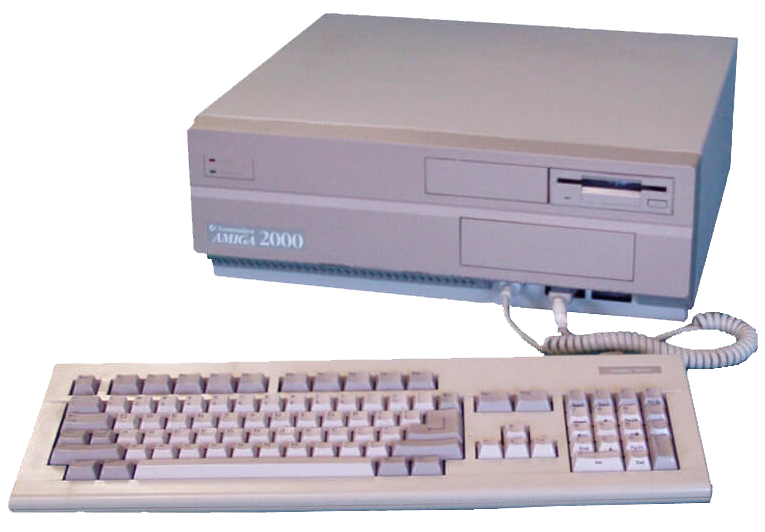
from 1992 – 1996
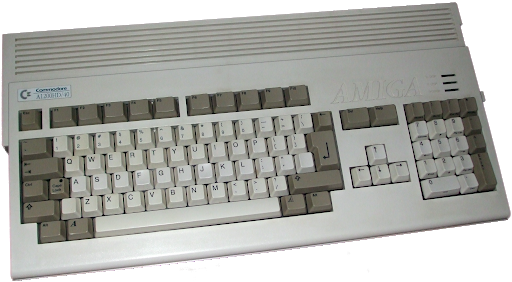
Amiga 1200
The A1200 offers a number of advantages over earlier models. Specifically, it is a 32-bit design;the 68EC020 microprocessor is faster thanthe 68000 and has 2 MB of RAM as standard.
The AGA chipset used in the A1200 is a significant improvement. AGA increases the color palette from 4096 colors to 16.8 million colors with up to 256 on-screen colors normally, and an improved HAM mode allowing 262,144 on-screen colors.
The graphics hardware also features improved sprite capacity and faster graphics performance mainly due to faster video memory.
from 1981 – 1994
BBC Model B
The British Broadcasting Corporation Microcomputer System, or BBC Micro, is a series of microcomputers and associated peripherals designed and built by the Acorn Computer company in the 1980s for the BBC Computer Literacy Project, operated by the British Broadcasting Corporation.
Designed with an emphasis on education, it was notable for its ruggedness, expandability, and the quality of its operating system.
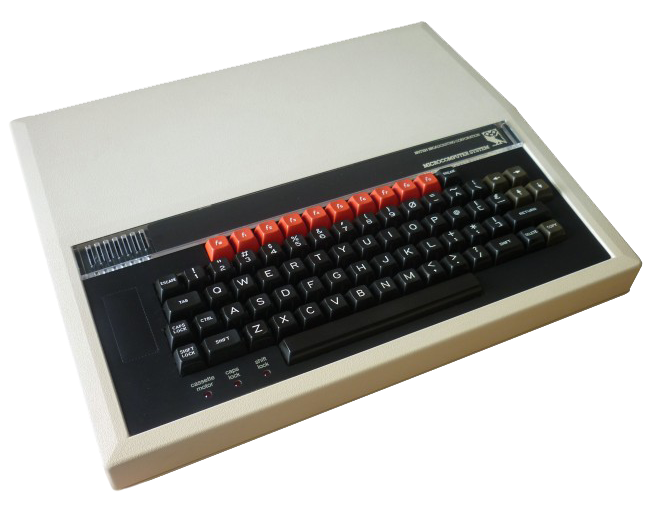
from 1985 – 1998
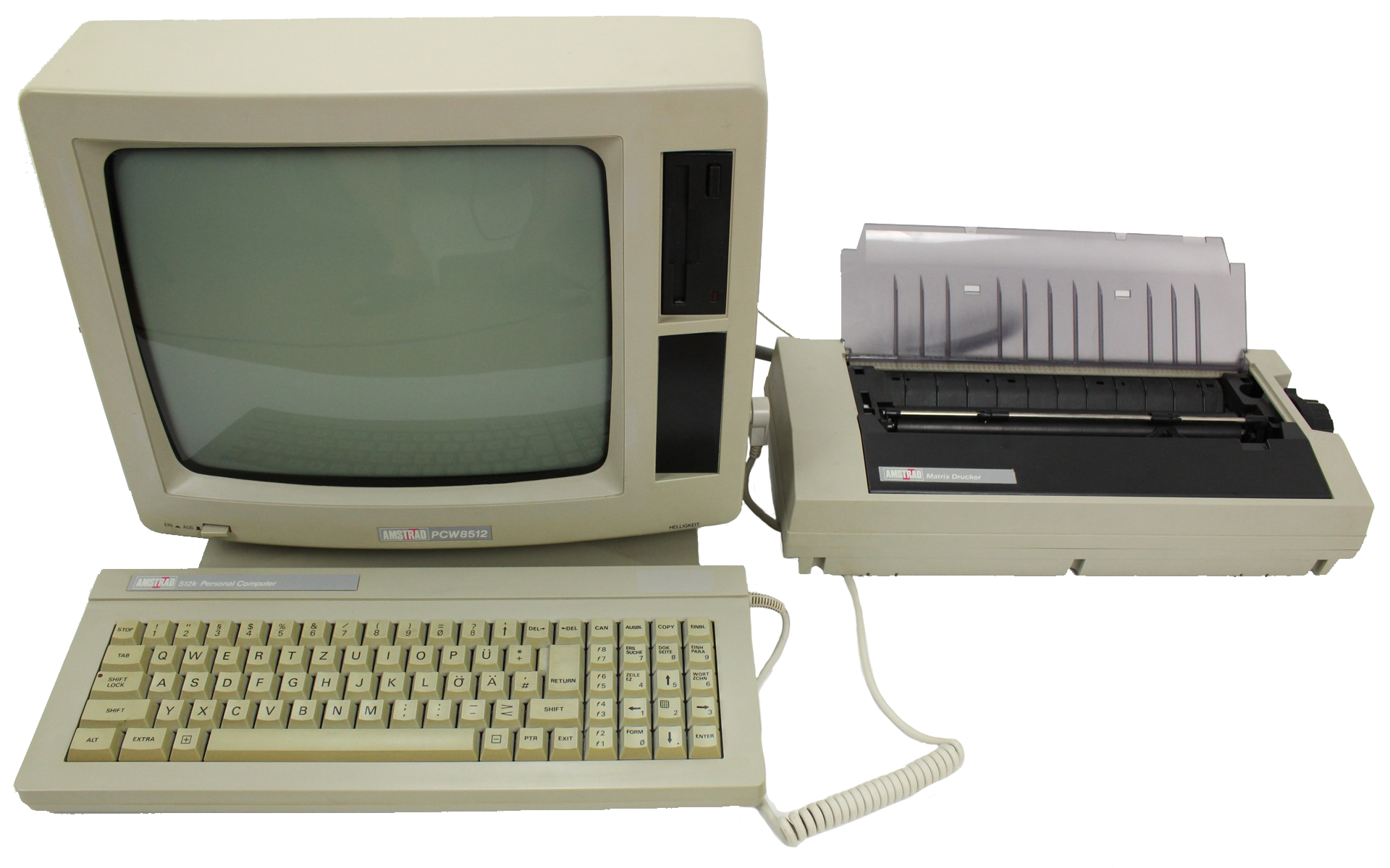
Amstrad PCW 8256
The Amstrad PCW series is a range of personal computers produced by British company Amstrad from 1985 to 1998.
All models except the last included the Locoscript word processing program, the CP/M Plus operating system, Mallard BASIC and the LOGO programming language at no extra cost.
from 1984 – 1987
Amstrad CPC 464
The CPC 464 is the first personal home computer built by Amstrad in 1984. It was one of the bestselling and best produced microcomputers, with more than 2 million units sold in Europe.
The 464 was popular with consumers for various reasons. Aside from the joystick port, the computer, keyboard, and tape deck were all combined into one unit that attached to the monitor via two cables.
The monitor also contained the power supply unit which powered the whole unit via one wall plug. It did not have very many wires and was simple enough for even the most inexperienced user to install.
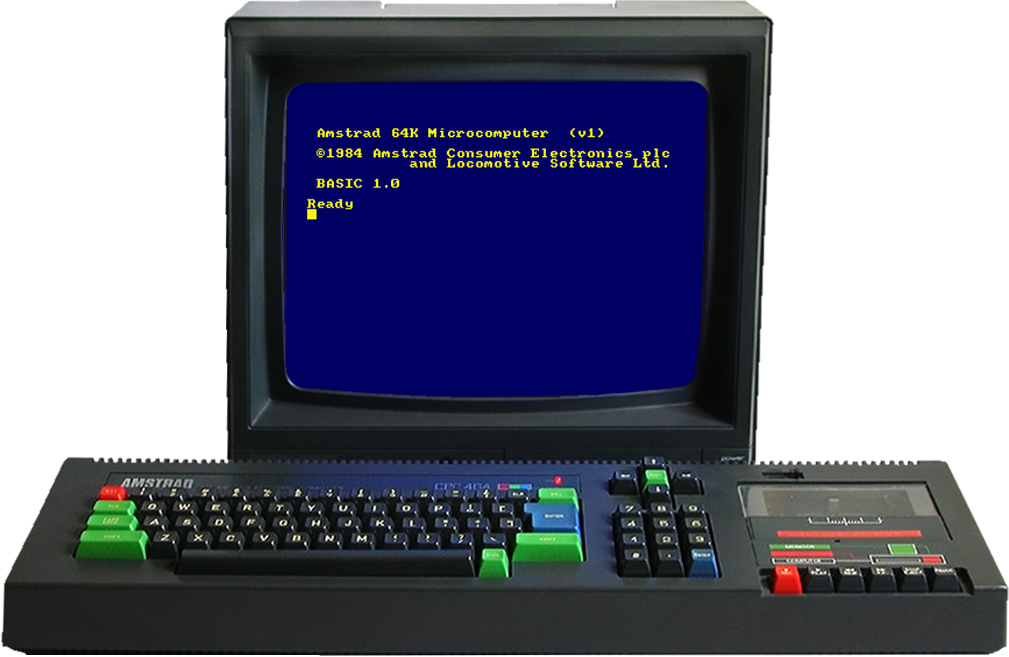
from 1982 – 1992
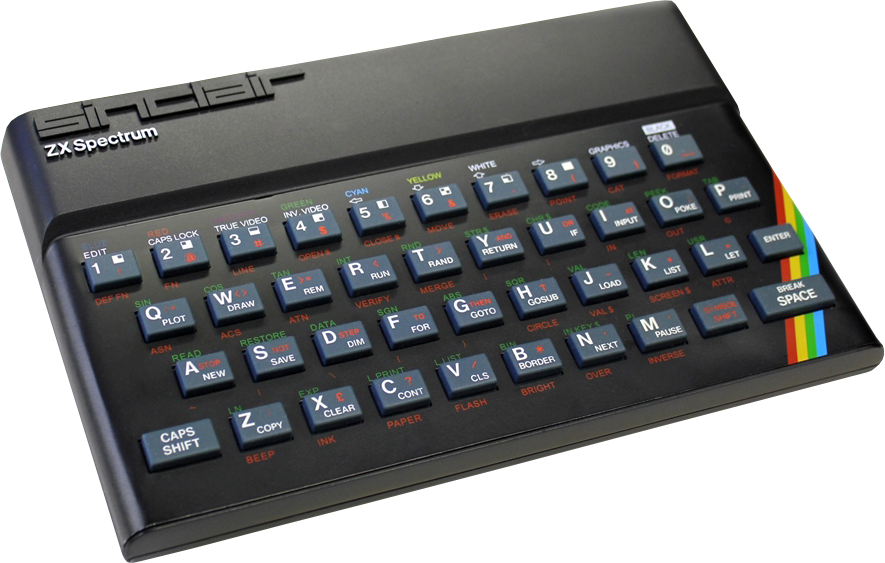
ZX Spectrum 48K
The ZX Spectrum is an 8-bit personal home computer released in the United Kingdom in 1982 by Sinclair Research.
It was launched as the ZX Spectrum by Sinclair to highlight the machine’s colour display.
The Spectrum was released as eight different models, ranging from the entry level with 16 KB RAM released in 1982 to the ZX Spectrum +3 with 128 KB RAM and built in floppy disk drive in 1987.
from 1986
ZX Spectrum 128k
The ZX Spectrum 128 was jointly developed by Sinclair Research and Investrónica under the code-name “Derby”.
It was released first in January 1986. The 128 is often referred to by the nickname “Toastrack”, referring to the large external heatsink attached to the right-hand side of the computer.
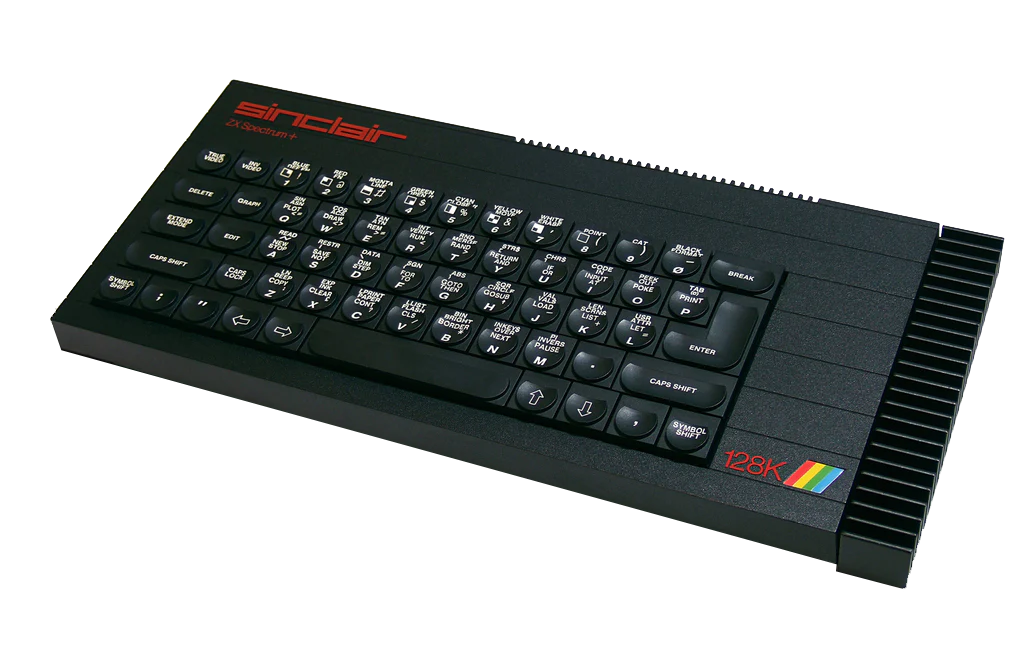
from 1981 – 1984
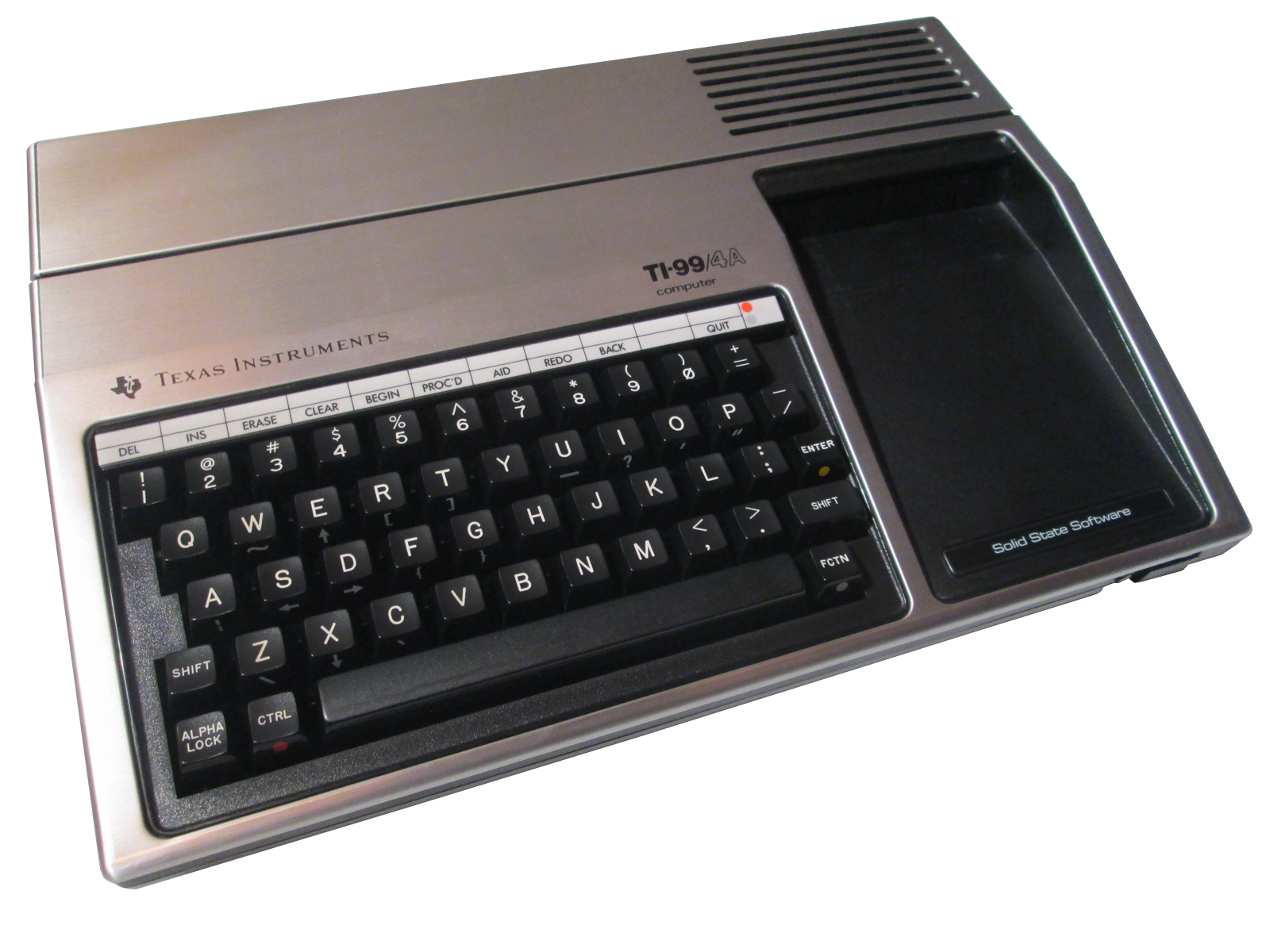
TI-99/4A
The TI-99/4A is a home computer released in 1981 by Texas Instruments. It was the first 16-bit home computer. The associated video display controller provides color graphics and among the best sprite support of its era.
TI supported the 4A with peripherals, including a speech synthesizer and a “Peripheral Expansion System” box to contain hardware add-ons.
from 1986 – 1987
Atari 2600 Woody
The Atari 2600, originally branded as the Atari Video Computer System until November 1982, is a home video game console developed and produced by Atari, Inc.
The original Atari 2600 woody released on September 11, 1977, it is credited with popularizing the use of microprocessor-based hardware and games stored on ROM cartridges.
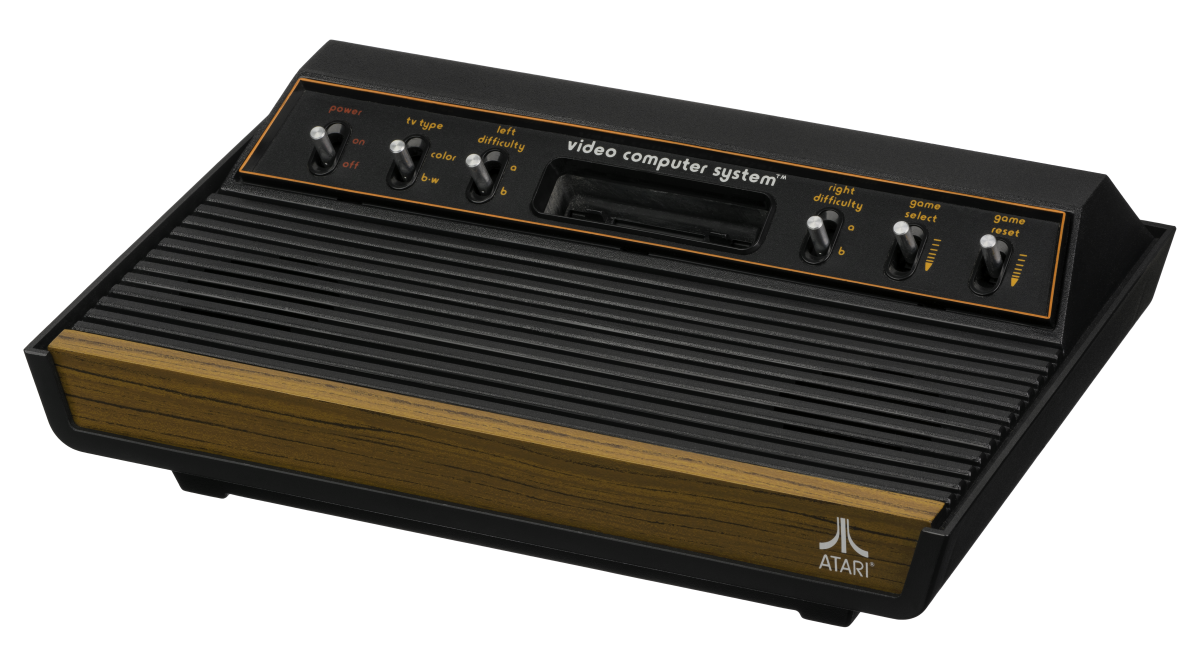
from 1991 – 1993
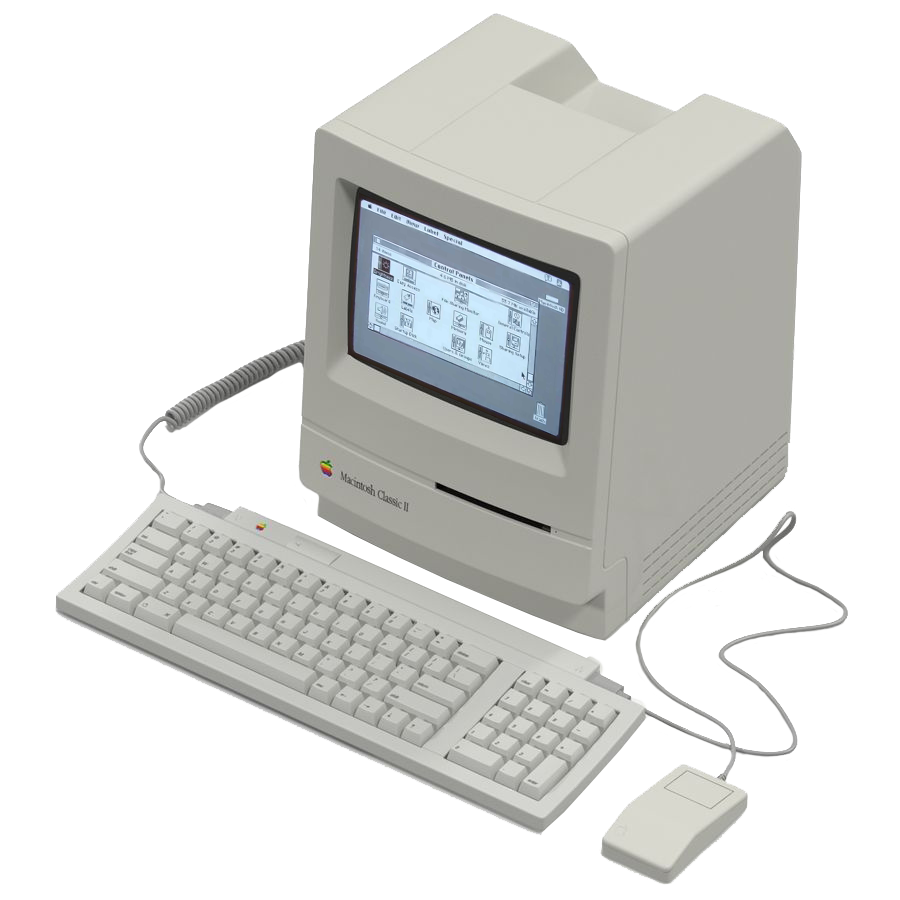
Apple Mac Classic II
The Macintosh Classic II is a personal computer designed, manufactured and sold by Apple Computer, Inc. from October 1991 to September 1993.
The Classic II was powered by a 16 MHz Motorola 68030 CPU and 40 or 80 MB hard disk.
The Classic II is the last black-and-white compact Macintosh, and the last desktop Macintosh to include an external floppy disk drive port.
from 2020 – 2021
ODROID 64
THOUSANDS of games on your HDTV.
Play thousands of retro games on your HDTV with our Odroid 64 retro console.
Over 60,000 games on 50 systems
With a massive library of games from Atari and NES all the way to Nintendo 64, Dreamcast and PlayStation 1 – not forgetting all the goodness inbetween.
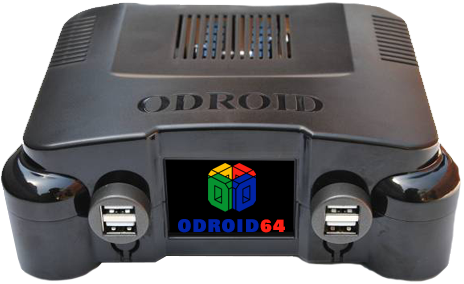
from 2018 – 2021
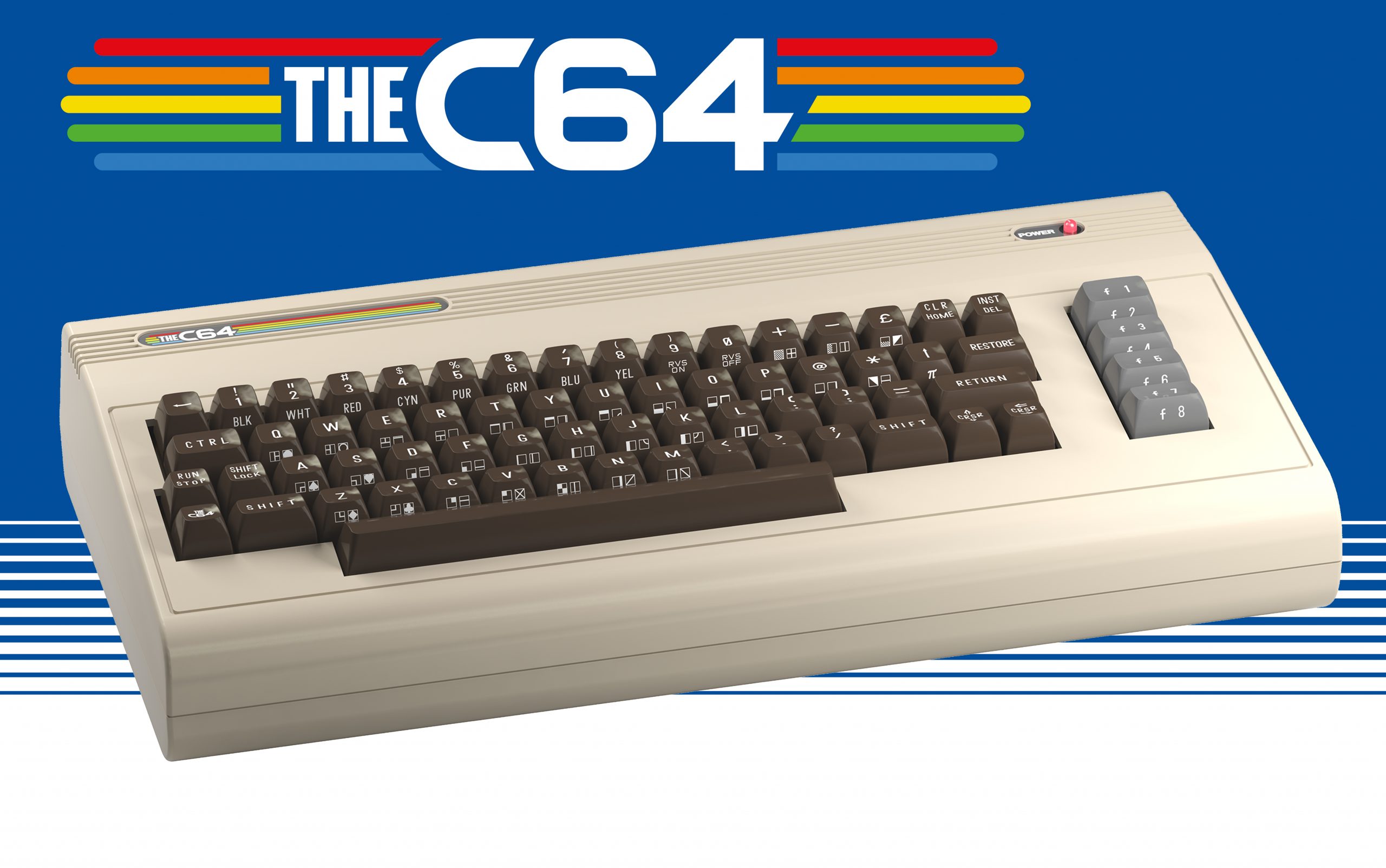
The C64 Mini & Maxi
The C64 is back, this time full-sized with a working keyboard for the dedicated retro home-computer fan. Featuring three switchable modes – C64, VIC 20, and Games Carousel.
Connect to any modern TV via HDMI for crisp 720p HD visuals, at 60 Hz or 50 Hz. An updated joystick, now featuring micro switches, companions the hardware making the included games even more fun than ever.
Retro Room 2020 / 2021
Vintage Retro Room
In December 2020 I decided to build my retro room and fill it with all the systems that I had used in my lifetime and especially the ones who influenced my journey into the computer industry.
The room is now finished and brings me a huge amount of pleasure taking me back to better days and I have enjoyed both building the room and future proofing the technology so it can live on for many more years.


For the full experience – check out on Desktop
During the lockdown of 2020/2021
I decided to create my own
RETRO ROOM
With all the issues of lockdown, not being able to do the normal things and with 24 hours a day doom and gloom and everyone thinking they know what’s right for us all, I decided not to watch the news anymore and create somewhere that took me back to happier times where life was less complicated, people looked out for one another and we all felt alot safer.
My RETRO ROOM project consisted of computers and systems that reminded me of my youth and systems that I have previously owned and ones that had a significant impact on my life growing up.
Apart from nostalgia, they marked important milestones in my life and bring me alot of happy memories as well as reminding me of lost skills and how diverse my knowledge and skill base was as we have grown into an Apple vs everyone else world.

Commodore VIC-20
1980 – 1985
The Commodore VIC-20 is an 8-bit home computer that was sold by Commodore Business Machines.
The VIC-20 was announced in 1980, roughly three years after Commodore’s first personal computer, the PET.

Commodore 16
1984 – 1985
The Commodore 16 is a home computer made by Commodore International with a 6502-compatible 7501 or 8501 CPU, released in 1984.
The C16 belong to the same family as the higher-end Plus/4 and are internally very similar to it (albeit with less RAM – 16 rather than 64 KB – and lacking the Plus/4’s user port and Three plus one software).

Commodore 64
1982 – 1994
This original Commodore 64 known as the breadbin model is an 8-bit home computer introduced in January 1982 by Commodore International.
The Commodore 64 had three different Kernal ROM versions, two different SID sound chip versions, a few different motherboard versions and two different cases during its lifetime.

Amiga 500 Plus
1987 – 1991
The Commodore Amiga 500 Plus is an enhanced version of the original Amiga 500 computer.
It was notable for introducing new versions of Kickstart and Workbench, and for some minor improvements in the custom chips, known as the Enhanced Chip Set (or ECS).

Amiga 2000
1987 – 1991
The Amiga 2000 is a personal computer released by Commodore in March 1987.
Expansion capabilities include two 3.5″ drive bays (one of which is used by the included floppy drive) and one 5.25″ bay that can be used by a 5.25″ floppy drive (for IBM PC compatibility), a hard drive, or CD-ROM once they became available.

Amiga 1200
19920 – 1996
The A1200 offers a number of advantages over earlier models. Specifically, it is a 32-bit design; the 68EC020 microprocessor is faster than the 68000 and has 2 MB of RAM as standard.
The AGA chipset used in the A1200 is a significant improvement. AGA increases the color palette from 4096 colors to 16.8 million colors with up to 256 on-screen colors normally, and an improved HAM mode allowing 262,144 on-screen colors.
The graphics hardware also features improved sprite capacity and faster graphics performance mainly due to faster video memory.

BBC Model B
1981 – 1994
The British Broadcasting Corporation Microcomputer System, or BBC Micro, is a series of microcomputers and associated peripherals designed and built by the Acorn Computer company in the 1980s for the BBC Computer Literacy Project, operated by the British Broadcasting Corporation.
Designed with an emphasis on education, it was notable for its ruggedness, expandability, and the quality of its operating system.

Amstrad PCW 8256
1985 – 1998
The Amstrad PCW series is a range of personal computers produced by British company Amstrad
from 1985 to 1998.
All models except the last included the Locoscript word processing program, the CP/M Plus operating system, Mallard BASIC and the LOGO programming language at no extra cost.

Atari 2600 Woody
1986 – 1987
The Atari 2600, originally branded as the Atari Video Computer System until November 1982, is a home video game console developed and produced by Atari, Inc.
The original Atari 2600 woody released on September 11, 1977, it is credited with popularizing the use of microprocessor-based hardware and games stored on ROM cartridges

Apple Mac Classic II
1991 – 1993
The Macintosh Classic II is a personal computer designed, manufactured and sold by Apple Computer, Inc. from October 1991 to September 1993.
The Classic II was powered by a 16 MHz Motorola 68030 CPU and 40 or 80 MB hard disk.
The Classic II is the last black-and-white compact Macintosh, and the last desktop Macintosh to include an external floppy disk drive port.

ZX Spectrum 48k
1982 – 1992
The ZX Spectrum is an 8-bit personal home computer released in the United Kingdom in 1982 by Sinclair Research.
It was launched as the ZX Spectrum by Sinclair to highlight the machine’s colour display.
The Spectrum was released as eight different models, ranging from the entry level with 16 KB RAM released in 1982 to the ZX Spectrum +3 with 128 KB RAM and built in floppy disk drive in 1987.

TI-99/4A
1981 – 1984
The TI-99/4A is a home computer released in 1981 by Texas Instruments. It was the first 16-bit home computer. The associated video display controller provides color graphics and among the best sprite support of its era.
TI supported the 4A with peripherals, including a speech synthesizer and a “Peripheral Expansion System” box to contain hardware add-ons.

ODROID 64
2020 – 2021
THOUSANDS of games on your HDTV.
Play thousands of retro games on your HDTV with our Odroid 64 retro console.
Over 60,000 games on 50 systems with a massive library of games from Atari and NES all the way to Nintendo 64, Dreamcast and PlayStation 1 – not forgetting all the goodness inbetween.

The C64
2018 – 2021
The C64 is back, this time full-sized with a working keyboard for the dedicated retro home-computer fan. Featuring three switchable modes – C64, VIC 20, and Games Carousel.
Connect to any modern TV via HDMI for crisp 720p HD visuals, at 60 Hz or 50 Hz. An updated joystick, now featuring micro switches, companions the hardware making the included games even more fun than ever.

My Retro Room
2020 – 2022
In December 2020 I decided to build my retro room and fill it with all the systems that I had used in my lifetime and especially the ones who influenced my journey into the computer industry.
The room is now finished and brings me a huge amount of pleasure taking me back to better days and I have enjoyed both building the room and future proofing the technology so it can live on for many more years.
